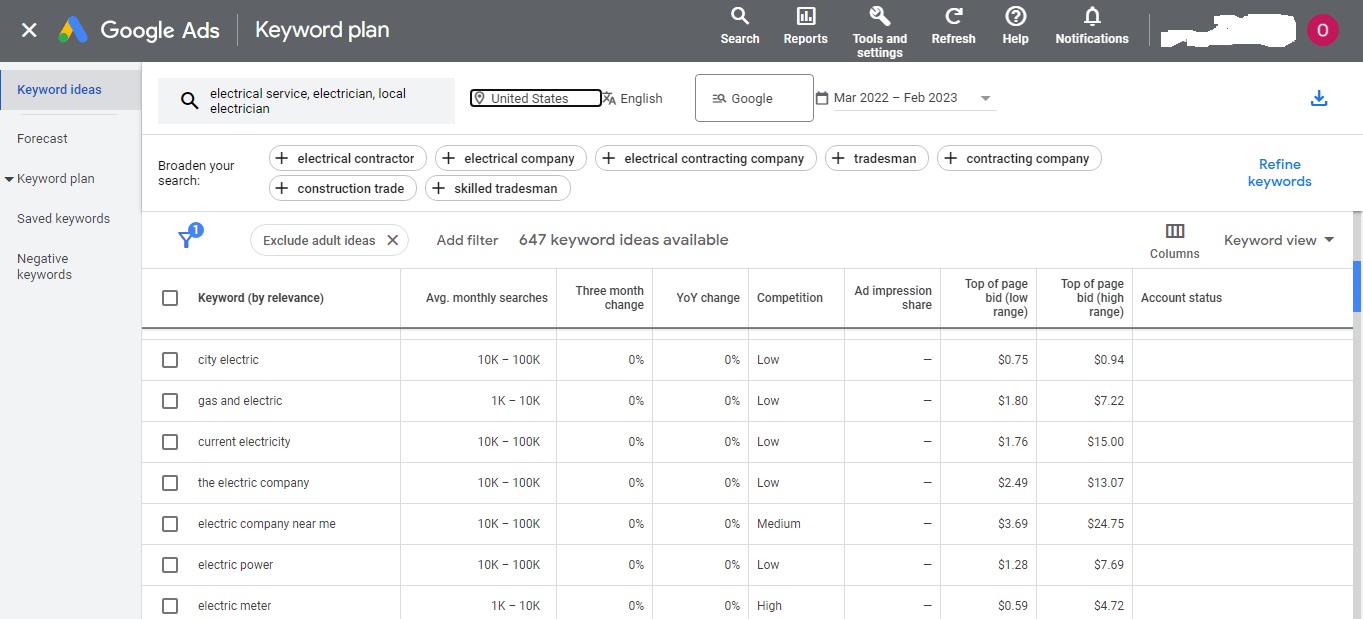Oluwadunmola Adefioye | Updated: June 8, 2023 | Home services advertisement
 The HVAC industry is highly competitive, and your HVAC business must be exceptional to stand out. Your company requires smart, targeted advertising to reach a potential customer base and generate leads to stand out. And with technology evolving at lightning speed, staying updated with the advertising trend is the way to go.
The HVAC industry is highly competitive, and your HVAC business must be exceptional to stand out. Your company requires smart, targeted advertising to reach a potential customer base and generate leads to stand out. And with technology evolving at lightning speed, staying updated with the advertising trend is the way to go.
There is no one-size-fits-all approach to HVAC advertising because every business has a unique target audience. However, there are some tried and tested ways to reach your target demographic that you can implement in your strategy.
This article will explore the most effective marketing channel to reach your target market and increase your revenue. The key to effective HVAC advertising is understanding your target audience and how to reach them.
PPC is unique among other forms of digital advertising for home improvement services mainly because it is highly flexible, allowing you to target a sub-group of people. PPC also levels the playing field among competitors, allowing you to compete regardless of your advertising budget.
Knowing the types of PPC ads available is good because it is the first step towards identifying, targeting, and reaching your audience.
Search ads are designed to appear at the top of the search engine results page to catch the attention of potential customers quickly. Using relevant keywords, you can specifically target individuals and businesses needing HVAC servicing, repair, or installation.
Search campaign ads are a potent type of PPC because 65% of consumers click on them while making purchases, making them an ideal advertising platform for HVAC contractors.

Display ads are a kind of ‘push’ PPC advertising that shows your brand to people whether they are actively interested in your HVAC company’s services or not. Display ads reach about 90% of internet users, which is unsurprising as they appear on over 2 million websites and 650,000 apps.
While display ads don’t have the potency of search ads, they are great for boosting home service brand imaging, especially for an HVAC company looking to disrupt the market.
Remarketing ads are a PPC advertising strategy aimed at people who have previously visited HVAC-related websites or shown interest in your HVAC products and services. These ads aim to remind potential customers about your HVAC products and services, keep your HVAC business in mind, and encourage them to book a service.
Social media ads for HVAC companies are another type of PPC that can effectively target potential customers on social media platforms. Social media advertising can be targeted based on demographics such as age, location, job title, and interests.
Social media ads are suitable for promoting your social media posts, seasonal specials, and discounts, such as AC maintenance or furnace installations.
Google local service ads are advertisements targeted explicitly toward individuals searching for HVAC-related services in a specific location. These advertisements can take the form of visual or text ads and can be seen on various platforms such as social media, search engines, and local directories. They usually carry online reviews and contact information.
While LSA is categorized under PPC ads, it’s pay-per-lead, meaning you only have to pay when the prospective client contacts you. Google local service ads providing sale-qualified leads take you one step closer to conversion than regular PPC ads.
With 91% of consumers preferring to see video content, it’s no wonder video marketing is rising even though the setup is more costly than other PPCs. Video ads can showcase your company’s expertise, equipment, and customer service, making viewers more likely to choose your HVAC company for their heating, cooling, and ventilation needs.
You can also use HVAC video ads to educate viewers on maintaining their HVAC system or introduce new products and services.
As I mentioned in the introduction, there are effective marketing strategies that have worked overtime regarding HVAC services advertising. The following paragraphs focus on critical aspects of your PPC campaign that can make or mar your marketing efforts.
Using Google Adwords, the largest PPC platform, as a reference, I will offer insights and tips for a successful marketing campaign.
The working principle of PPC ads is based on keyword bids. However, the Ad rank determines an ad’s position for search rankings. Before your ad can appear on SERPs, you must beat competitors in areas like ad relevance, expected clickthrough rate, landing page, and maximum bid.
Your quality score (a product of ad relevance, expected CTR, and landing page optimization) also determines your cost-per-click because better quality scores mean reduced CPC. Therefore, your focus should be optimizing these criteria for a cost-effective way to increase your chance of reaching your target audience.

When conducting HVAC keyword research for your PPC ads, it is vital to consider the specific services your company offers and the location of your target audience. Keywords such as “AC repair,” “furnace installation,” and “duct cleaning” may be relevant to your business.
However, adding location to your keywords, such as “HVAC services in ” or “HVAC contractors near me,” can help you narrow the audience to target customers with high intent within your service area.
Keywords with high organic search volumes tend to be competitive, hence a higher cost-per-click. Needless to say, competing for these keywords will drain your resources fast and doesn’t guarantee success. Keywords with average search volumes with an increasing trend are perfect for your HVAC services.
Checking out the keyword used by other HVAC services can also help exploit gaps in their keyword usage. Google Ads keyword planner and Trends provide insight into trending keywords and their search volumes. They also suggest keywords you can use for your PPC ads.
Landing pages from ads refer to the web pages people will see when they click on your advertisement. Your landing pages must be designed to convert visitors into leads or customers by providing valuable information, a clear and concise message, and a solid call to action.
Most importantly, your landing page should be highly relevant to the ad that brought the visitor there, and it should be able to provide everything the visitor needs to decide or take action.
Considering the effect of a landing page on your ad rank and retention, you should create unique landing pages for different ad campaigns. Your website can have different landing pages on heating, cooling, and ventilation. Or different ones for maintenance, repairs, and installation.
Your CTAs (call to action) should aim to persuade consumers to take a particular action. The effectiveness of your CTA depends on factors such as its relevance, design, and placement within your ads, landing pages, and web pages.
In addition, your CTAs should continue to guide your site visitors to their desired outcomes. You can take it further by using personalized CTAs to make the buyer journey peculiar. Personalized CTAs take the buyer’s stage in the sales funnel into consideration.
Your bidding strategy depends on qualities like keywords value, industry, campaign goals, and budget. The HVAC industry has an average CPC of $7.82 despite the average CPC across all industries being $2, indicating that the HVAC industry is competitive with high-value keywords.
Despite this, you can bid lower or higher, depending on your chances of landing a search engine ranking spot. A good tip is to bid lower on generic keywords with low intent or broad match and higher for exact matches with high intent.
Your budget comes into play when determining the ‘daily maximum budget’ for your Google ads. If you are just starting, you should set your daily budget around $50 to get a quick analysis of your ad strength. The insight you get from your ad’s analytics (clickthrough and conversion rates) informs your next ‘daily max budget.’
Finally, your campaign goals can affect your bidding strategy because you may want to reduce or increase your bids depending on your desired result. For instance, if brand awareness is secondary to lead generation, you have to bid better for quality keywords to increase your chances of reaching your target audience.
You should know now that setting up a Google Ads campaign for your HVAC company requires careful planning and attention to detail. It starts with choosing your campaign type(search, display, video, etc.) and the result you are aiming for (brand awareness, leads, website visits, or app downloads). You must also decide on the searcher’s location and times of the week your ads should be active.
The following line of action is to create ad groups based on specific services, such as air conditioning repair or furnace maintenance and installation. Then you have to deal with the keywords in your ad group with the preferred match type.
A keyword match type is the degree of correctness you want your keyword to have with a search query from a potential lead. Each search query related to HVAC services can have an exact, phrase, or broad match type with your keywords.
The exact match type indicates strict correctness; the phrase indicates keyword variations and the broad match type means loose correctness. Using long tail keywords helps filter out user intent from searchers and improve the chances of your ad appearing on the SERP.
Your HVAC business Google ad copy should focus on the benefits of your service and how you are the better option. Your target audience should be able to resonate with your message by seeing what they are looking for, specific aspects of your HVAC services like air condition repair or winter heating installation.
Give your ad copy a boost by adding selling points or special offers such as “Get a free AC maintenance check when you sign up for our annual service plan.” It’s also important to include a clear call to action, such as “Book an appointment today”. Finally, your HVAC ad copy should be concise with keywords to increase SERP visibility.
Ad extensions are essential bits of information not primarily included in the SERP Ad block, so you must add them when setting up your campaign. It’s vital for HVAC ads because it allows you to provide additional information and call-to-actions for potential customers.
Prospective customers can quickly engage your heating and ventilation service company through contact links, special offers, et cetera. Ad extensions increase your click-through rates (CTR) and overall ad engagement, leading to better Quality Scores and lower costs-per-click.
Negative keywords are those words you do not want your ads to appear for when someone searches for them. They help improve the relevancy of your ads and decrease your cost per click.
Start by analyzing your existing data to identify which non-relevant search queries are triggering your ads. Then, add these keywords as negatives to your campaigns, ad groups, or at the account level. You have to regularly review and update your negative keyword list to ensure that your ads are not showing up for irrelevant or low-quality search queries.
Monitoring the performance of your HVAC Google ads is essential to understand the effectiveness of your advertising campaign. By monitoring key metrics such as click-through rates, cost per click, and conversion rates, you can optimize your HVAC ads for better performance.
Analytics tools such as Google Analytics 4 help track conversions and evaluate the ROI of your ad campaign.
PPC advertising offers a wider range of potential clients through search, display, and social campaigns than traditional marketing, email marketing, or content marketing. However, its most significant selling point is that you can target your audience, use it based on your marketing budget, and it can be measured.
You can measure your HVAC advertising campaign success through performance metrics like ad impressions, clickthrough rates, conversion rates, cost-per-click, and ad’s return on investment.
HVAC PPC marketing gives contractors a low-entry, measurable, customizable advertising idea with a propensity for impressive yields. The only catch is to execute these HVAC marketing strategies adequately.
Focusing on what your target market wants helps you to build your marketing goals, while optimizing your ad campaign and website pages helps you achieve them. Don’t forget that the market is dynamic, requiring you to be on your toes to compete. Proper analysis of your digital marketing campaigns tells you where you are in achieving said goals.
In addition, exploring other digital marketing strategies (HVAC SEO, email marketing, business listings, social media marketing, et cetera) can improve the chances of your HVAC ads reaching the right market.
Understandably, PPC ads can seem overwhelming, especially with tight work schedules, which shouldn’t prevent you from accessing the pool of prospective clients. Fortunately, we at Klutch Growth care about helping you run a smooth lead generation campaign.
Our extensive experience as a digital marketing agency gives us the proper leverage to elevate your lead generation. Book a Calendly call now and let’s see how we can help your HVAC company.

I enjoy writing engaging and practical articles that help local businesses grow. That’s why I take my time to understand the industry - customers and businesses - before writing a word.
Aside from content marketing, I enjoy watching football and love my beloved Arsenal FC.
Hire Klutch Growth